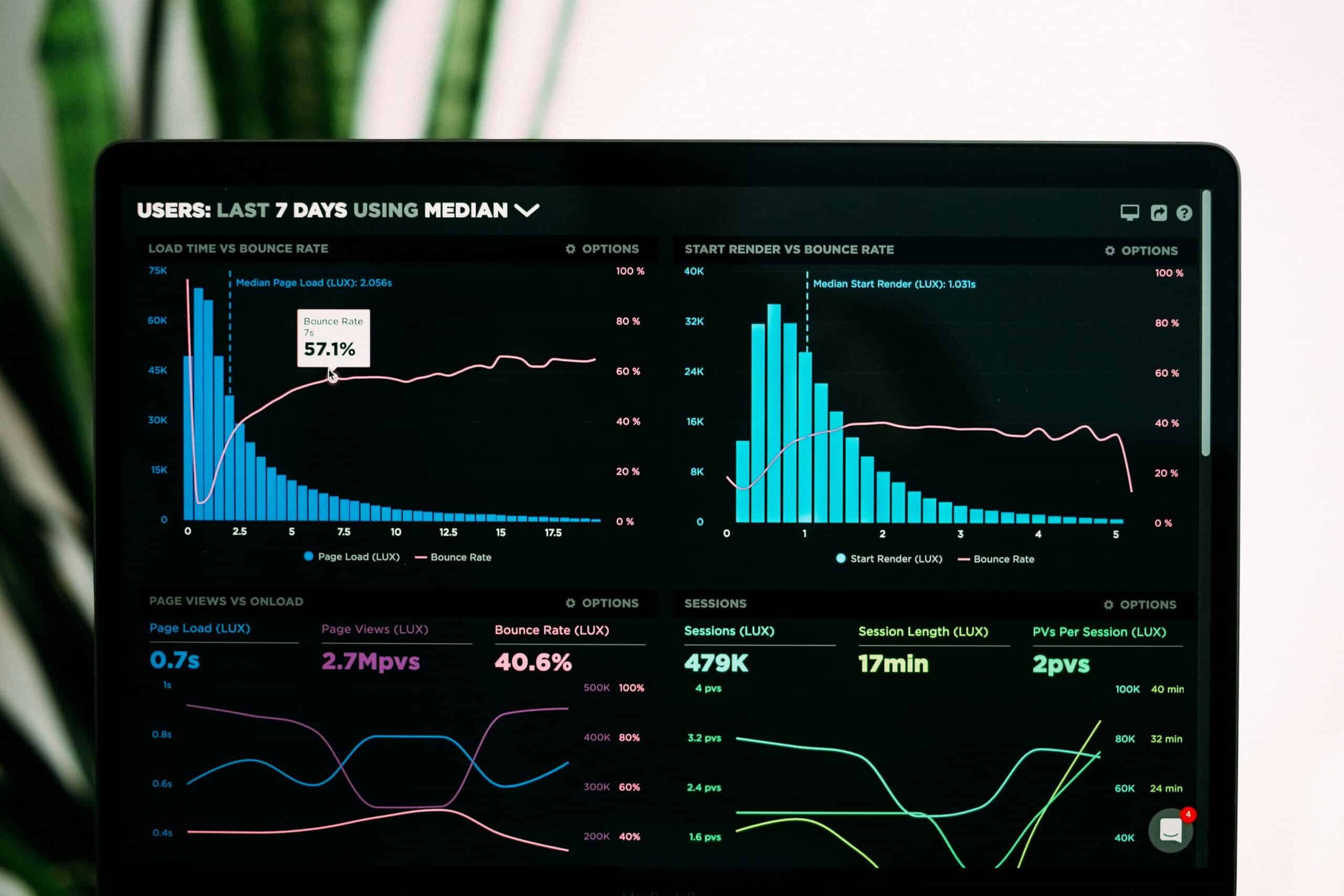Your £10 monthly website template looks professional on your desktop. You built it yourself, saved money, and felt proud of the result.
Meanwhile, 90% of your potential customers are seeing something completely different on their phones. A broken, messy version that makes them click away before they even read your business name.
We see this reality every week at TTOY Digital. Business owners come to us in shock when we show them what their customers actually experience. The template they thought was saving money has been costing them thousands in lost business.
The Mobile Reality Check
Most small business owners build their template sites on desktop computers. They see clean layouts, properly aligned text, and functioning buttons. Everything looks exactly as intended.
But here’s what they miss: over 60% of web traffic comes from mobile devices. For typical B2C businesses, that number jumps to 90%.
When we sit down with business owners and pull up their site on a phone, the reaction is always the same. Shock. Then disappointment.
Buttons that don’t work. Text scattered across the screen. Images that don’t load properly. The professional website they thought they built becomes “a bit of a mess” on the device most customers use.
One heating engineer we worked with had spent months perfecting his template site. On desktop, it looked clean and professional. On mobile, his contact information was buried under a broken navigation menu. Potential customers couldn’t even find his phone number during heating emergencies.
The Curse of Being Too Close
Business owners suffer from a fundamental blind spot when building their own sites. They’re too close to see what customers actually experience.
We approach every website as if we’re the business’s customer. We don’t know the industry jargon. We don’t understand the technical processes. We just want our problem solved.
That heating engineer’s homepage was full of terms like “power flushing,” “system balancing,” and “boiler servicing.” Perfect technical language that demonstrated his expertise.
But someone with a cold house doesn’t want power flushing. They want to know: “Can you fix my heating?”
We see this pattern everywhere. Accountants talking about “statutory accounts” and “corporation tax compliance” when clients just want help with their taxes. Plumbers showcasing technical certifications when customers need emergency repairs.
Templates can’t guide business owners away from these mistakes. They’re just empty containers waiting to be filled with whatever the owner thinks sounds professional.
The Differentiation Problem
Over 18 million websites use DIY website builders. Wix alone powers 45% of template sites, with Squarespace capturing another 18%.
When millions of businesses use the same templates, differentiation becomes impossible.
We recently worked with a local plumber whose template site looked identical to five other plumbers in his area. Same layout, same stock photos of pipes, same generic messaging about “reliable plumbing services.”
How do customers choose between identical websites? Usually price. Which means template sites often attract the worst kind of leads: price shoppers who call asking “how much to fix a tap?”
Meanwhile, businesses with professional, differentiated websites attract customers who say things like: “I saw on your website you explain everything upfront and guarantee your work. When can you come look at our heating system?”
Leveraging Logo Design for Impactful Web Presence
Another blind spot we consistently find: massive logos eating up screen real estate.
Business owners love their logos. They want them front and center, taking up huge portions of their homepage. It makes perfect sense from their perspective.
But if someone is already on your website, they know who you are. That giant logo is just pushing your actual value proposition below the fold where mobile users will never see it.
We’ve seen businesses dedicate 30% of their mobile screen to logo and navigation, leaving tiny slivers for the content that actually converts visitors into customers.
The Quality Lead Transformation
When we rebuild template sites with proper customer-focused messaging, the transformation goes beyond just more traffic. The quality of leads improves dramatically.
Instead of cold inquiries from price shoppers, businesses start receiving warm leads from people who already understand what they need and why they need it.
The website does the education and trust-building work before the phone rings. Customers arrive already informed about services and pricing. They’re not calling to shop around; they’re calling because they want to work with this specific business.
That plumber we mentioned went from two price-shopping calls per week to being booked solid two weeks in advance. Within six months, he hired his first employee because he couldn’t keep up with demand.
The transformation wasn’t just about getting more calls. It was about getting better calls from customers who valued his expertise instead of just comparing prices.
The Hidden Cost Analysis
Business owners often calculate website costs wrong. They see the £10 monthly template fee and think they’re saving money compared to professional web design.
But they’re not accounting for opportunity cost. Every day that template site runs, it’s losing potential customers who might have converted with a proper website.
If a better website could generate just one additional customer per month, what would that be worth? For most small businesses, it’s hundreds or thousands of pounds in additional revenue.
The template site isn’t saving money. It’s hemorrhaging it in lost opportunities that never show up in any report.
Your Digital Shop Front
We tell business owners to think of their website like a shop window. You wouldn’t spend £10 on a window display with a couple of balloons and expect customers to walk in.
Your website works 24/7 when people browse the web. Unlike a physical shop window that only matters when people walk past, your digital presence reaches customers across the entire region at all hours.
The more unique and professional your online presence, the more you stand out from competitors using generic templates. You’re demonstrating that you put effort into your business, which suggests you’ll put effort into serving customers.
Professional websites consistently outperform templates in every meaningful metric. Better engagement, higher conversion rates, more qualified leads, and stronger customer relationships.
The Six Month Reality
When business owners finally understand their website should be their hardest working employee, the transformation is remarkable.
Six months after moving away from templates, we typically see more traffic, better footfall for physical stores, and significantly more sales directly attributable to the website.
But the changes go deeper than just numbers. 70% of small business websites lack clear calls to action, leading to confusion and lost opportunities.
Professional sites eliminate time-wasting calls from unqualified prospects. The relationship building that used to happen over multiple phone conversations now starts on the website itself.
Customers arrive with enhanced trust and transparency. They understand what they’re buying and why they need it. Business transactions become smoother and more profitable.
Most importantly, satisfied customers become referral sources. They’re more likely to recommend a business that made them feel informed and confident throughout the buying process.
The Real Investment
Professional web design isn’t an expense. It’s an investment in your business’s growth and sustainability.
Template sites might seem cheaper upfront, but they create hidden costs that compound daily. Lost customers, price-shopping leads, extended sales cycles, and damaged credibility all eat into profitability.
A properly designed website becomes your best salesperson, working around the clock to pre-qualify leads and build trust before prospects ever pick up the phone.
The choice isn’t between saving money and spending money. It’s between losing money invisibly or investing in growth visibly.
Your customers deserve better than a template. So does your business.

